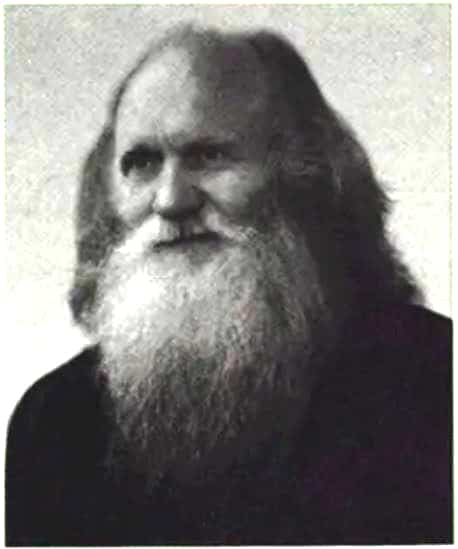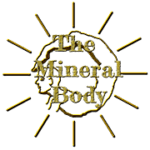The History of Biochemistry
See the evolution of the biochemic method through the pivotal men of history that contributed to the science
"The patients best doctor is his own healing force"

The Biochemic Method of Healing - Historical Deep-Dive
Samuel Hahnemann
1807- The first documented mention of the homeopathic method was seen in Hahnemann’s essay Indications of the Homeopathic Employment of Medicines in Ordinary Practice, published in Hufeland’s Journal.
This would be the first time the world was introduced to the concept of like-begets-like, or chemicals that induce a certain effect in the body, when administered in a hyper-diluted ‘homeopathic preparation’ actually remedy that same condition.
Hahnemann was born in Meissen, Saxony (near Dresden), and as a young man, was proficient in many languages (English, French, Greek, Latin & Italian, eventually adding Arabic, Chaldaic, Hebrew and Syriac to the list).
He would put this talent to good use, translating many books throughout his lifetime.
Eventually, his interests would turn to medicine, and he studied at the University of Erlangen, graduating as an MD in 1779. Hahnemann would soon become dissatisfied with the direction medicine was going, and objected to the common practices of the time, such as bloodletting.
Hahnemann would go on to state; “My sense of duty would not easily allow me to treat the unknown pathological state of my suffering brethren with these unknown medicines. The thought of becoming in this way a murderer or malefactor towards the life of my fellow human beings was most terrible to me, so terrible and disturbing that I wholly gave up my practice in the first years of my married life and occupied myself solely with chemistry and writing”
Through his ongoing study, translating medical texts, Hahnemann came across William Cullen’s A treatise on the Materia Medica, where it was mentioned the bark of a Peruvian tree was effective in treating Malaria (due to it’s astringency). Testing such theories on himself, Hahnemann found that this bark induced symptoms similar to Malaria, and concluded “that which can produce a set of symptoms in a healthy individual, can treat a sick individual who is manifesting a similar set of symptoms.”
Thus the principal of like cures like was born, the primary approach of the homeopathic method. The second major discovery was on the value of potentization, the fact that when such medicines are diluted to the extent that only trace amounts of the active agents remain, when administered, spur the body into defending, and remedying such symptoms.
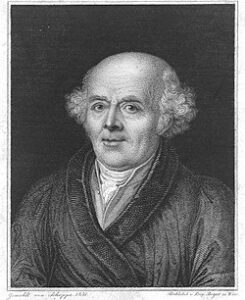
Christian Friedrich Samuel Hahnemann (1755-1843) founder of the Homeopathic method of Medicine
Hahnemann was fluent in 9 languages, translated over 20 books in his lifetime, and birthed a form of medicine that is still flourishing to this very day.
Published works
–Organon of the rational art of healing (246 editions published in 6 languages. Considered the essential cornerstone of homeopathy, the authority on its doctrine and practice)
–Organon of the medical art (91 editions published between 1810 and 2019)
–Reine Arzneimittellehre (Pure pharmacology) 45 editions pubished between 1811 and 1995
–Organon of homœopathic medicine (34 editions published between 1836 and 2019)
–The chronic diseases : their peculiar nature and their homoeopathic cure (31 editions published between 1835 and 2020) This was requested by several professors of Homoeopathic medical colleges, who wished to use this as compact college textbook.
–Exposition de la doctrine médicale homoeopathique : ou organon de l’art de guérir [Exposition of the homoeopathic medical doctrine: or organon of the art of healing] (36 editions published between 1832 and 2018)
–The Friend of Health, in which Hahnemann “recommended the use of fresh air, bed rest, proper diet, sunshine, public hygiene and numerous other beneficial measures at a time when many other physicians considered them of no value
– Essay on a New Principle for Ascertaining the Curative Powers of Drugs (in German). 1796.
–Fragmenta de viribus medicamentorum positivis sive in sano corpore humano obeservitis, a collection of 27 drug administrations and their homeopathic provings – published in Latin in 1805.
-Hahnemann also campaigned for the humane treatment of the insane in 1792
Dr. Schuessler would go on to become a student of homeopathy, and use it in practice for 15 years before developing the Biochemic Method
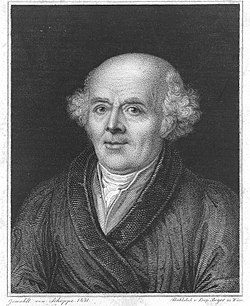
Jacob Moleschott
1852 – Dutch physiologist and scientist Jacob Moleschott – Came to realize that Phosphor was an essential component of a healthy nervous system, and coined the phrase “No thought without phosphor” along with ” The brain secretes thought as the liver secretes bile”.
This was the beginning of the biochemic method of understanding. Moleschott discovered the link, and importance between the mineral salts of the tissues and the healthy functioning of the human and animal organism.
The young Schuessler would be inspired by Moleschott’s scientific works, such writings as ” The substances which remain after incinerating (human and animal tissue) – what we call ashes – make up the foundation which gives tissues it’s form and determines it’s type. There is no bone without Calcium phosphate, no cartilage without cartilage salt, no blood without Iron, no saliva without Potassium chloride”
This would spur Schuessler into further study and analysis of cremated organs and tissues of the deceased, and to finding links to deficiency of certain minerals and expression of certain dis-eases in the tissues.
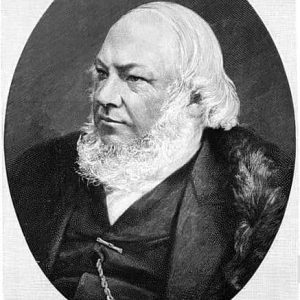
Jacob Moleschott (1822-1893) Physiologist and Scientist
Moleschott’s works on nutrition, and the life cycles of humans and animals where extensive (see list below, translated from German and Italian)
Published works
– Teaching of Food. For the People (Erlangen, 1850; 3rd edition, Erlangen, 1858).
– Physiology of Food (1850; second edition, 1859)
– Physiology of Metabolism in Plants and Animals (1851)
-The Cycle of Life (1852; fifth edition, 1887)
– Investigations on the natural theory of man and animals (1856-93), continued after his death by Colosanti and Fubini
– On Human Life (1861-67), a collection of essays
– Physiological Sketchbook (1861)
– Advice and comfort in times of cholera (1864; third edition, 1884)
– On the influence of mixed and chromatic light in the exhalation of carbonic acid for the animal organism (1879), with Fubini

Rudolf Virchow
1858 – Cellular pathology was released, and would prove an inspiration to Dr.Schuessler, with statements such as “every sickness or illness is a result of the disruption of the cells”.
Virchow was a German physician, anthropologist, pathologist, prehistorian, biologist, writer, editor, and politician – Rudolf Virchow. Known as “the father of modern pathology” and founder of social medicine, he was academically brilliant, and known to his colleagues as the “Pope of medicine”.
He studied medicine at the Friedrich Wilhelm University under Johannes Peter Müller. A prolific writer, he produced more than 2000 scientific writings. Cellular Pathology (1858), regarded as the root of modern pathology, introduced the third dictum in cell theory: Omnis cellula e cellula (“All cells come from cells”).
Virchow was the first to describe and name such diseases as embolism, ochronosis, leukemia and thrombosis. He coined such biological terms as “chromatin”, “neuralgia”, “agenesis”, “parenchyma, “osteoid” and “spina bifida”. His works on the life-cycle of the roundworm (Trichinella spiralis) influenced the practice of meat inspection.
The first systematic method of autopsy was developed by Virchow. He vehemently opposed the germ theory of disease, stating; “If I could live my life over again, I would devote it to proving that germs seek their natural habitat: diseased tissue, rather than being the cause of diseased tissue”. Virchow, like Schuessler, focused on restoring health through first restoring cellular functions.
Schuessler and Virchow would later both agree – “The basic cause for all processes in life, and the reason for changes in the organism and tissues, are to be found in the excitability of the cells, therefore the creation and character of an illness is due to the activity of the cells”
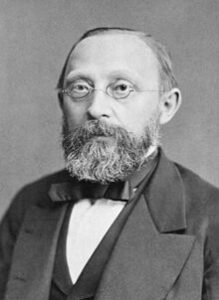
Rudolf Ludwig Carl Virchow (1821-1902) Published over 2000 scientific writings. "Father of modern Pathology"
With many publications, numerous diseases classified and named after him, as well as biological agents and functions, there are too many to list in full here. See below a few examples of Virchow’s works, one of which is still in use today; Virchows Archiv: European Journal of Pathology – (1847- present)
Published works
-Contributions on the Typhus Epidemic in Upper Silesia (1848).
-Cellular pathology in its foundation on physiological and pathological tissue theory, his chief work (1858; English translation, 1860)
-Handbook of Special Pathology and Therapy, prepared in collaboration with others (1854-76).
-Lectures on Pathology (1862-72)
-The pathological tumors (1863-67)
-On famine typhus (1868)
-Contributions to the Physical Anthropology of the Germans (1876)
-The Freedom of Science in the Modern State (1877)
-Collected Treatises in the Field of Public Medicine and Epidemiology (1879)
-Standardized the methods of systematic Autopsy
-Described multiple diseases, biological agents & functions, many of which are still in use today
-His work on parasites influenced & changed standard meat practices
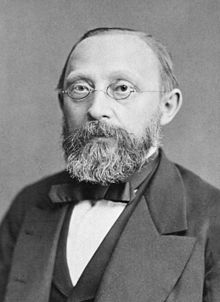
Justus Von Liebig
1876 – Justus further inspired young Schuessler with his work on the inorganic medium of the plants (Agricultural Biochemistry) to the following statement ” It is exactly the same to grow a plant in a special fertilizer, and to cure sick tissues by providing molecules of an inorganic salt, which is homogenic to that, that causes functional disorder”
Justus Freiherr von Liebig (1803 – 1873) a German scientist and master of chemistry, who made fundamental contributions to agricultural and biological chemistry, and is considered one of the principal founders of organic chemistry. While working as professor at the University of Giessen, he devised the modern laboratory-oriented teaching method, and for such innovations, he is regarded as one of the greatest chemistry teachers of all time.
For his discoveries on the usage of nitrogen and trace-minerals as essential plant nutrients, he has been described as “father of the fertilizer industry”.
This along side his formulation of the law of minimum – which describes how in actuality, true healthy plant growth relies on the scarcest nutrient resource, as opposed to the total amount of resources available (which, if in excess, induces nutrient locking).
Justus would go on to further his career in chemistry, and eventually develop a process for extracting beef extracts, and create the world’s first ‘stock’ cube. He went on to form the Liebig Extract of Meat Company, bringing the Oxo brand beef bouillon cube into the kitchens of the people for the very first time
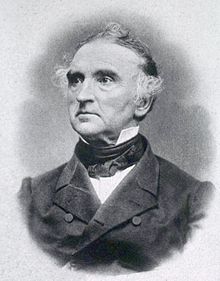
Justus Freiherr von Liebig (1803-1873) - "Father of the Fertilizer Industry"
Liebig founded the journal of chemistry, Annalen der Chemie (Annals of Chemistry), which he published from 1832 onwards. It became the world-wide leading journal in chemistry and still exists today.
Published works
-On the Study of the Natural Sciences and on the State of Chemistry in Prussia (1840) Digital Edition of the University and State Library Düsseldorf
-The organic chemistry in its application to agriculture and physiology; in English, Organic Chemistry in its Application to Agriculture and Physiology (1840)
-The organic chemistry applied to the animal physiology and pathology; in English, Animal chemistry, or, Organic chemistry in its applications to physiology and pathology (1842)
-Familiar letters on chemistry and its relations to commerce, physiology and agriculture (1843)
-Chemical Letters (1844) Digital Edition (1865) of the University and State Library Düsseldorf

Dr. Wilhelm Heinrich Schüßler (or Schuessler, in English)
1821- Wilhelm Schuessler was born in Bad Zwischenahn, in the Ducthy of Oldenburg. It was not until the age of 31 that Schuessler would begin his medical studies in Paris, and then Berlin. He would attain the title of Dr(Medical) in Giessen.
1858 – Schuessler would register as a Medical Practitioner and Midwife, and begin treating injuries, illness and assisting in childbirth. Through practicing his art, his focus soon turned to homeopathics, which he used in treating his patients for some 15 years.
1872- Schuessler would begin turning his attention to the aforementioned giants of their fields, and taking in all he had learnt through homeopathy, the groundbreaking findings of chemistry, and nutrition in the human body, he begins work on the Shortcut Therapy.
1873 – The birth-year of biochemistry – Schuessler publishes A shortcut to homeopathic therapy in the General Homeopathic Newspaper-edition No.12. This provoked a great amount of excitement amongst his colleagues, however the publication was simply the findings and results of schuesslers experiments.
As part of his research, Schuessler analyzed the mineral contents from the ashes of cremated human organs and confirmed the link between the change of minerals an the cause of illness, or why the person suffered.
1874 – Schuessler publishes his first book – An abridged therapy on the basis of Physiology and Cellular Pathology (inspired, and expanding on the works of Hahnemann, Moleschott, Virchowand Liebig) Putting forward his thesis; “The inorganic substances found in the blood and tissues are sufficient to cure all diseases that can be cured“
He stated the fact that the salts which remain after combustion form an essential part of every cell, even when present in very small quantities, and that any change in their proper quantitative relations will disturb normal cell function and cause disease.
The biochemic remedies are not actually homeopathic, as they are not selected according to similarity, but rather in accordance to signs of lack. They are chemically pure salts, homogenous to the cell-minerals of the organism, physiologically and chemically. The aim is; by the aid of these minerals, disturbed molecular action in the cells can be rectified, as, taken for a certain period; these salts will compensate the losses incurred during a disease. Thus, the cells will recover and so, the system as a whole will be able to overcome the disease completely.
What was taken from homeopathy, was the process of preparation – in accordance to ‘Hahnemann’s Homeopathic Principal’, the minerals are potentized with a binding agent, in order to acquire particular, and powerful physical properties. (See page on trituration for more detail on this process)
1879 – Schuessler releases Healing of Diptheria – The Biochemicical way, and then proceeds to go on and save the lives of over 1000 children, who had been given up for dead by ‘modern’ (allopathic) medicine. All through the power of one of the cell-salts (#4 Potassium chloride, vital for detoxification and correct gland and lymph function)
1885 – The first Biochemic Association was founded in Oldenburg, Germany – and is still growing strong today.
1898 – Schuessler passes away, leaving a legacy and potent form of healing that is still alleviating suffering to this very day. Thank-you Schuessler, your works will not be forgotten, only expanded upon. He aimed to restore the healing power to the individual, to empower anyone to become what Hippocrates wished for all of us – “Physician, heal thyself”!

Dr. Wilhelm Heinrich Schuessler (1812-1893) Father of the Biochemic Method of Healing
Published works
-An abridged therapy : manual for the biochemical treatment of disease (52 editions published between 1879 and 2017)
–An abbreviated therapy based on histology and cellular pathology (13 editions published between 1874 and 1881)
–Abridged therapeutics : founded upon histology & cellular pathology : with an appendix, giving special directions for the application of the inorganic cell salts, and indications of the underlying condition of morbid states of tissue : biochemic method of successfully treating disease (5 editions published between 1884 and 1891)
–The twelve tissue remedies of Schuessler, comprising the theory, therapeutical application, materia medica and a complete repertory of these remedies( 3 editions published between 1890 and 1893)
–The cure of diphtheria by biochemic treatment : a word to educated laymen (6 editions published between 1881 and 2019)
Here it is worth mentioning, more than a thousand children suffering Diptheria (who had been given up for dead by allopathic practitioners) were cured by the use of Schuessler’s Mineral therapies.
Additional works inspired by Dr. Schuessler
- Nature’s 12 magic healers : the amazing secrets of cell salts by Lionel Rolfe( )
- Homeopathic cell salt remedies : healing with nature’s twelve mineral compounds by Nigey Lennon( Book )
- Schüßler-Salze – schnell und einfach zuverlässige Selbsthilfe bei Beschwerden von A bis Z by Jörg Pantel( )
- A guide to the biochemic health therapies of Dr. (med) W.H. Schuessler( Book )
- Dr. Schuessler’s biochemistry : a medical book for the home by J. B Chapman( Book )
- So wirken Schüßler-Salze die besten Heilanwendungen by Maria Lohmann( )
- Dr. Schüssler und seine biochemische Heilmethode; ein Gedenkbuch zu seinem 100. Geburtstag by Hugo Platz( Book )
- Las sales de Schüssler : una guía fácil by Nigey Lennon( Book )
- Wilhelm Schüßler und seine biochemischen Arzneimittel by Marion Baschin( Book )
- Dr. med. Wilhelm Heinrich Schüssler sein Leben und Werk by Günther Lindemann( Book )
- The twelve tissue remedies and their use in trituration of Dr. Schüssler by Constantine Hering( Book )
- Dr. med. Wilhelm Heinrich Schüßler ein Literaturverzeichnis by Gisela Gefken( Book )
- The twelve tissue remedies of Schüssler : comprising the theory, therapeutical application, materia medica, and a complete repertory of these remedies : homoeopathically and bio-chemically considered by William Boericke( Book )
- Dr. med. Wilhelm Heinrich Schüßler Arzt aus Leidenschaft – Die Biographie by Peter Emmrich( Book )
- The treatment of disease with the twelve tissue remedies, being a treatise on biochemistry by William Boericke( Book )
- The biochemic system of medicine (Dr. Schuessler’s twelve tissue remedies) by Louis W Pauly( Book )
- The biochemistry of Schuessler; a system of treatment to maintain the body and mind in health and to cure all curable physical and mental diseases by use of the eleven tissue-remedies, or cell-foods, discovered and first used by Dr. Wilhelm Heinrich Schuessler, at Oldenburg, Germany by Sydney Blanshard Flower( Book )
Flash forward to today, and the Biochemic Association Institute now has over 70 branches and Education facilities. The Institute I studied under, The Academy of Biochemic Medicine Asia Pacific was founded in July 2000, and now has presence covering the entire Asia Pacific Region.
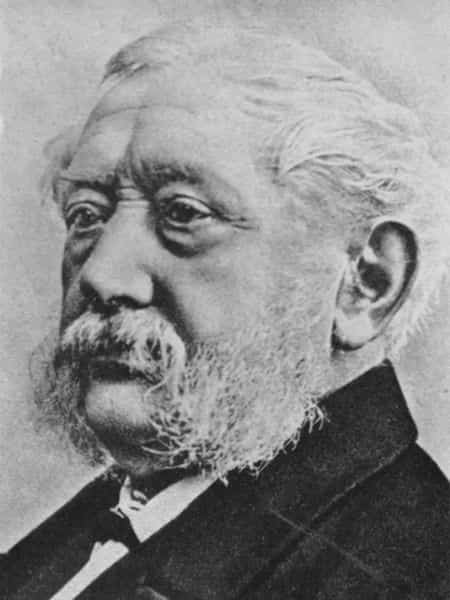
Guenther Stahlkopf
1972 – Stahlkopf would go on to scientifically prove Schuesslers theories in the labortory by experimenting with cell-salts #1(Calcium fluoride), #3(Iron phosphate) & #11(Silica) on human mono cells.
These minerals are in every human organism as the most important inorganic compounds. They are added as well as removed from the different types of tissues (via cellular metabolism). For all processes in and on the cells, the Biochemic minerals are necessary, and – if they exist in an incorrect quantity, we have a situation we call ‘illness’
More experiments would lead Stahlkopf to declare Schuessler’s theories proven through repeatable laboratory experimentation. The basis of these theories where:
1. The human body contains twelve essential mineral (tissue) salts, a correct balance of which must be maintained in order to ensure normal cell function and the maintenance of good health.
2. Any disruption to this balance will induce the situation we call “illness“.
3. A normal balance of these vital mineral salts can be re-established with the administration of the deficient mineral in a readily assimilated form, which passes rapidly into the bloodstream and therefore the cells.
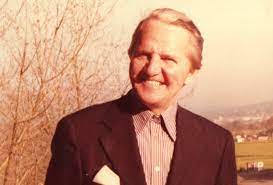
Günter Carl Stahlkopf (1918-2001) - Founder of Regena therapies
Regina therapies are a means of reducing toxicity in the body via homeopathics – the aim being the restoration of balance to the system. Known for such quotes as “Illness is the body’s pursuit of health.” & “Nature does nothing to destroy itself.”
Published works (in German)
–Vom Schnupfen bis zum Krebs – die Regena-Therapie Auszüge aus den Schriften von G. C. Stahlkopf [From the common cold to cancer – the Regena therapy Excerpts from the writings of G. C. Stahlkopf by Günter C Stahlkopf] (2 editions published between 2013 and 2014)
–Die Regena-Therapie Krankheit ist ein Heilbestreben des Körpers ; Auszüge aus den Schriften von G. C. Stahlkopf [Regena therapy disease is a healing endeavor of the body ; excerpts from the writings of G. C. Stahlkopf by Günter C Stahlkopf] (2014)
–Krankheit ist ein Heilbestreben des Körpers – die Regena-Therapie : Auszüge aus den Schriften von G.C. Stahlkopf [Disease is a healing endeavor of the body – Regena therapy : excerpts from the writings of G.C. Stahlkopf by Günter C Stahlkopf] (2 editions published in 2014)

Progress and research in this field continues to this very day
Introducing Facial Diagnosis
Through continued research and experimentation – it is now known that certain visual tells can be linked to deficiencies in the cell salts, as well as the states of the body fluids. All symptoms show for a reason, and we now have access to a thorough and comprehensive list of tells to assist us in biochemical applications. The face and the tongue are the most simple ways to visually see deficiencies, although they will eventually show throughout the body – in the state of the skin and tissues, if let go long enough. The body’s fluids – urine, sweat, mucus or phlegm – will also speak to the chemical balance within the body and make for useful real-time diagnostic tools in this field.
Links to signs on the face and illness was not a new concept, in fact, in Ayurvedic medicine and Traditional Chinese Medicine, these links where well known and well established – although their methods of treatment are infinitely more complex.
Kurt Hickethier
1910 – Inspired by Schuesslers findings, Kickethier would fall in love with the biochemical method of healing, and in particular the links that certain deficiencies shared with certain tones and features of the face. Hickethier would devote the next 10 years to studying this field, before going public with his findings.
Sometime during WW1, Hickethier had the chance to put his theories into action, after contracting Malaria and becoming diagnosed with Bekhterev’s disease ( today known as Ankylosing spondylitis – a painful arthritis of the spine – and still listed as un-curable as of 2021)
Hickethier decided to put himself and his theories to the test, with the use of facial diagnostics, he began treatment of himself using the biochemic method. His disease soon went into remission, and he was able to live another 40 years, free of the symptoms he was told he would have to live with.
1926 – Hickethier opened a Schuessler clinic in Ellrich. This would be the first Biochemic sanatorium in Germany, and gave Hickethier the means to analyze the faces of patients on a daily basis. This was how Hickethier cemented both Schuessler and his theories, through repeated trials and testing on his patients, with great success.
1934 – A second Biochemic Sanatorium is opened in Clettenburg castle, not far from Ellrich. Unfortunately, due to political reasons in 1938 the Nazi regime force him to close his practice, confiscate his sanatoriums and destroy his books.
1947- Hickethier flees the persecution of the Soviet occupation, and heads to West Germany, where he makes a new start with some colleagues in the field, opening a new clinic and teaching seminars. It would be here that he passes away in 1958.
Hickethier was also known for a few more revolutionary therapies such as; the Hickethier sight training method & the Hickethier health baths and spinal care system – that involved a special kind of massage that would target the nerves.
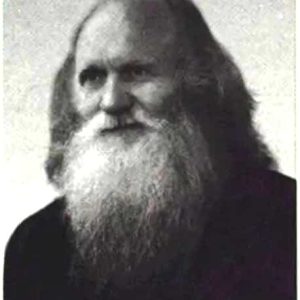
Kurt Hickethier (1891 – 1958) Expanding on Schuesslers findings - he devoted his life to Pioneering the field of Facial Diagnosis
His findings in the field of facial diagnosis are still in use today, he tested his theories on himself, and cured the un-curable. Another great mind from history.
Published works (in German)
-Lehrbuch der Biochemie [Textbook of Biochemistry] (7 editions published between 1925 and 2005)
–Sonnerschau Lehrbuch der Antlitzdiagnostik ; der Schlüssel zur erfolgreichen Anwendung der Biochemie, Balneologie und Diätetik [Textbook of facial diagnosis ; the key to the successful application of biochemistry, balneology and dietetics ] (3 editions published between 1950 and 2010)
–Volle Sehkraft : ein Führer zum Erfolg für alle unter besonderer Berücksichtigung der sehleidenden Menschen und solcher, die es nicht werden wollen [Full vision : a guide to success for all, with special reference to those who suffer from vision problems and those who do not want to by] (2 editions published in 1930)
–Antlitzdiagnostik Ein Fortbildungsb. f. Biochemiker [Facial diagnostics An advanced training book for biochemists by Kurt Hickethier. Biochemists] (5 editions published in 1924 in German)
–Lehrbuch der Antlitz-Diagnostik : der Schlüssel zur erfolgreichen Anwendung der Biochemie, Balneologie und Diätetik [Textbook of face diagnostics : the key to the successful application of biochemistry, balneology and dietetics ] (5 editions published in 1926 in German)
–Volle Sehkraft [Full vision](2 editions published between 1930 and 1932)
